I realize that not many people will have the equipment, time or desire to make their own homemade Italian sausage. I guess I must be crazy because it was a HAPPY day in my house when my meat grinder and sausage stuffer came in the mail!
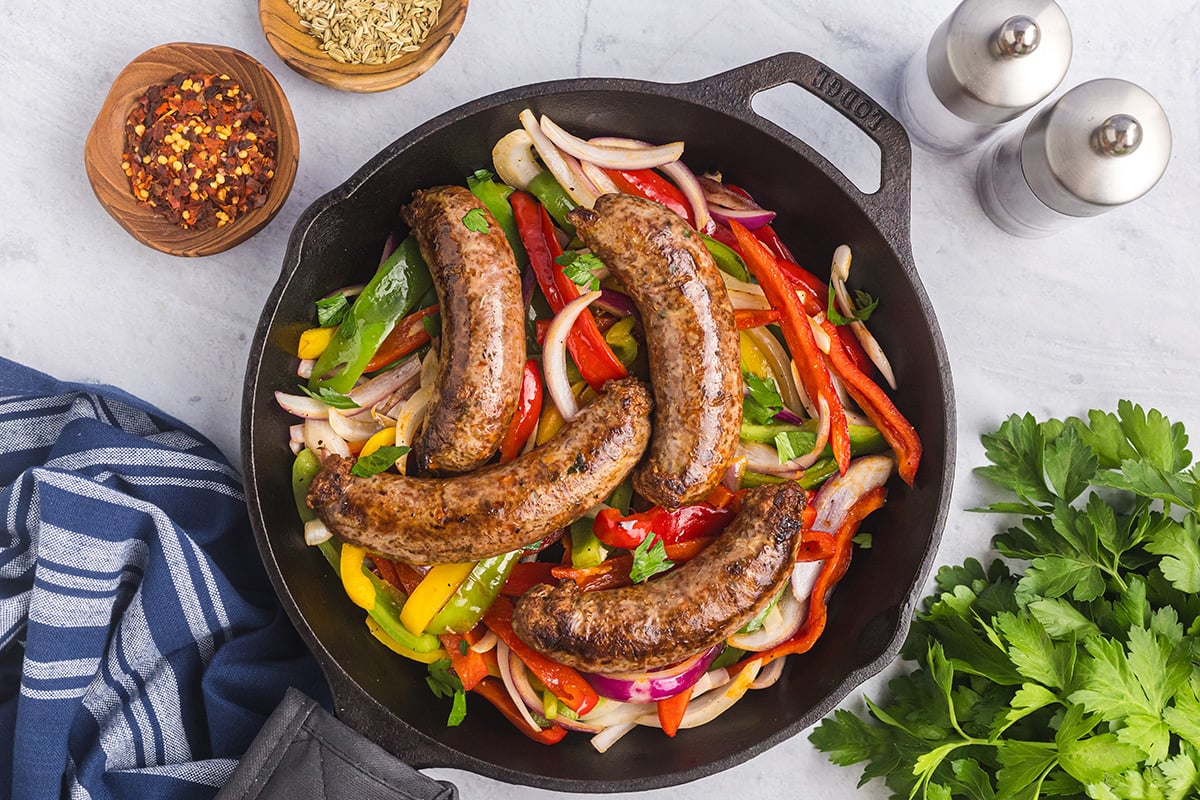
If you’ve ever met me in person, you’ll hear all about making your own butter and mayonnaise, two things I refuse to buy at the store. Two things I happen to be very passionate about. Now we are adding sausage to the list.


Ingredients
I’d be willing to bet you already have a lot of the ingredients needed to make this spicy Italian sausage. If not, you can easily purchase them online or at the store.
- Natural hog casings – This isn’t something you’ll find at a regular grocery store. I like to get mine on Amazon
- Seasonings – You can really season the meat however you’d like, but I use a mixture of whole fennel seed, smoked paprika, cayenne, coarse kosher salt, ground white pepper, onion powder and crushed red pepper.
- Sugar – This won’t exactly make the sausage sweet, but it does help to balance out some of the spices.
- Boneless fatty pork shoulder – Alternatively, you can use a pork butt. You can also add in some pork belly for flavor.
- Fresh Italian parsley – Fresh herbs like parsley bring a freshness and flavor to your homemade italian sausage recipe.
- Garlic cloves – Now I like a lot of garlic in my sausage, but you can measure it with your heart. Just make sure it is finely minced.
- Red wine – I love the flavor wine adds to the meat. I like to use something like a bold cabernet.
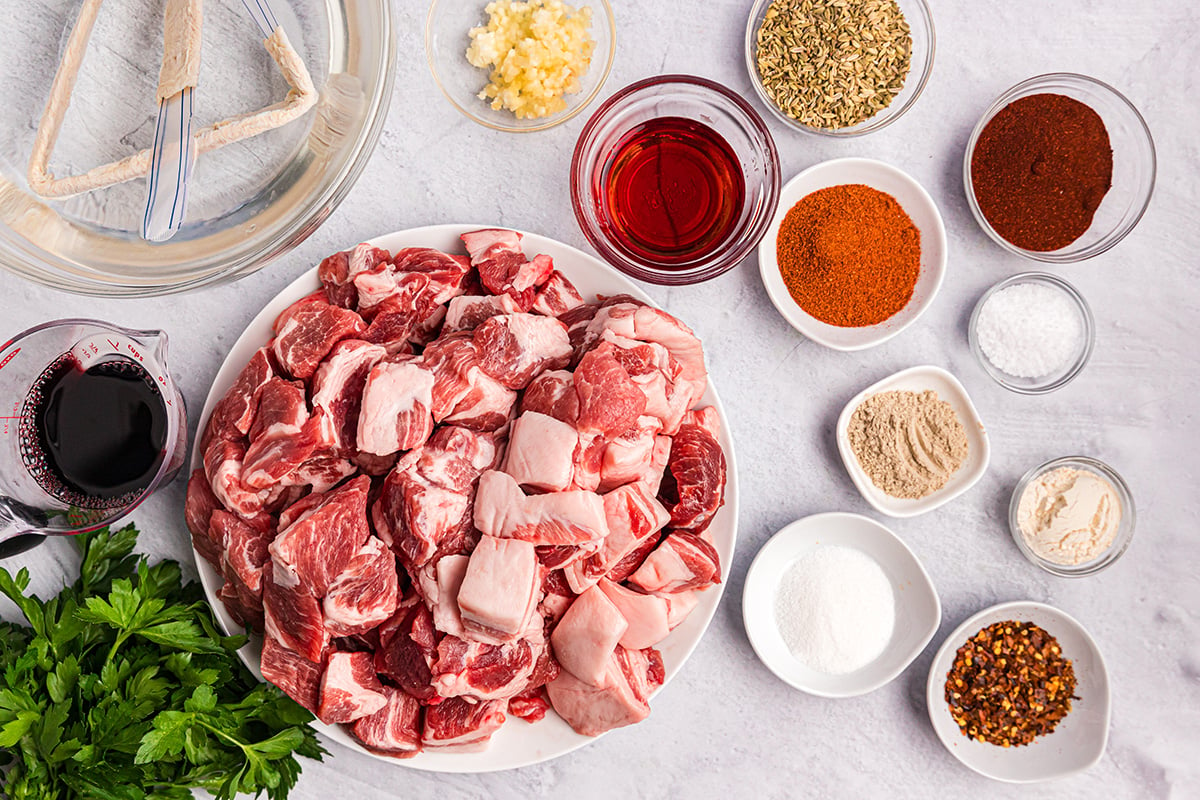
Variations
There are plenty of ways you can make this Italian sausage recipe your own. Here are a few suggestions.
- No casing – You can form into balls or sausage patties instead of stuffing into casing. Allow to sit for 2-3 hours at room temperature to cure and then refrigerate overnight before cooking. If you cook them too soon the wine and vinegar will not have enough time to absorb into the meat and will seep out under heat.
- Fine spices – If you want a finer spice mixture, blend all of the dried herbs and spices in spice grinder until fine.
- Mild sausage – If you want a milder sausage, use less or NO cayenne pepper or crushed red pepper flakes.
- Curing – Traditional sausage making calls for curing the links. Be creative with how you choose to dry your meat. I would suggest doing this inside or in a garage instead of outdoors due to insects and other animals wanting to nibble on your hard work. As previously mentioned, I used my laundry drying rack and aluminum foil. Also place a towel underneath the drying rack to catch any drips. Allow to cure for 2-3 hours. If you see any air bubbles you can puncture them with a sterilized sewing needle, although they won’t cause any problems if you leave them.
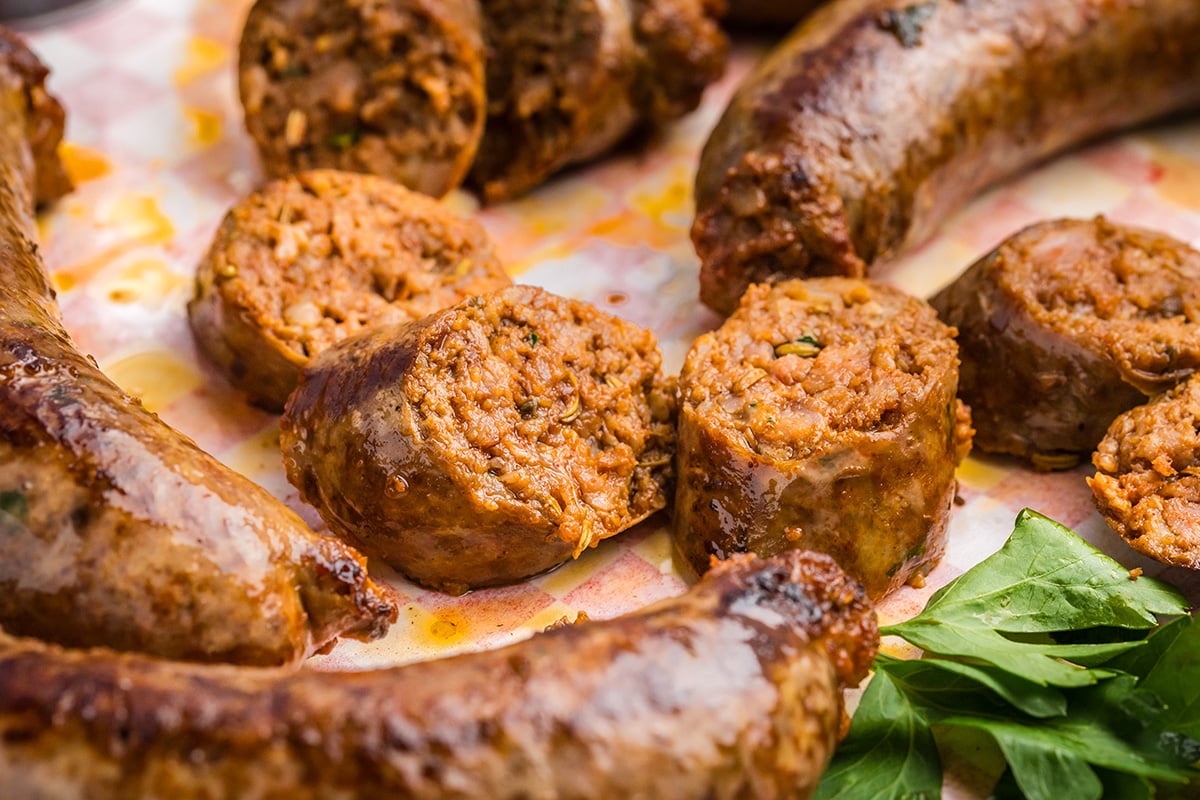
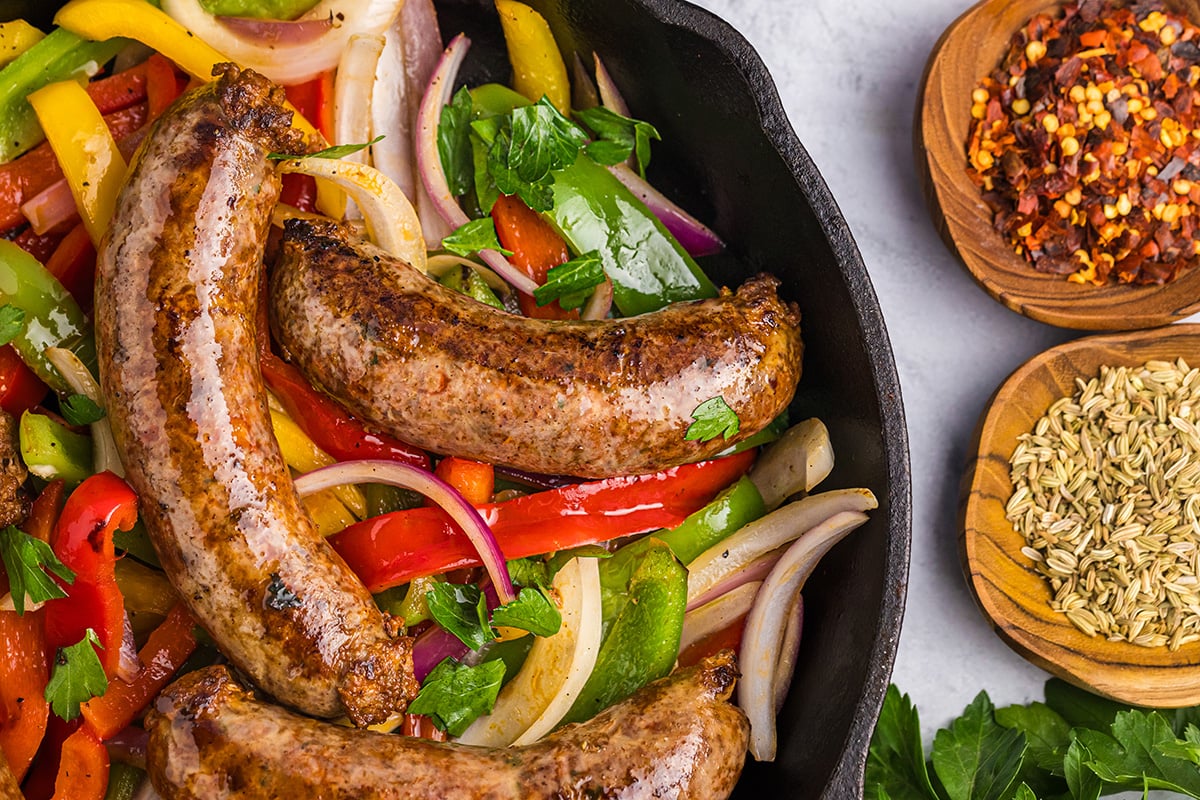
How to Prepare Casings
In the case of making sausages, the casings take a little work to prepare before you are ready to stuff them. You can do this while your equipment is chilling.
They look fragile and thin, but they are hearty and tough! Remove about 12-15 feet of sausage casings and place into a bowl of lukewarm water. Rinse well, drain water. Repeat until water is clear.
Carefully run water through the inside of each casing. Cover casings with fresh water and set aside until ready to stuff.
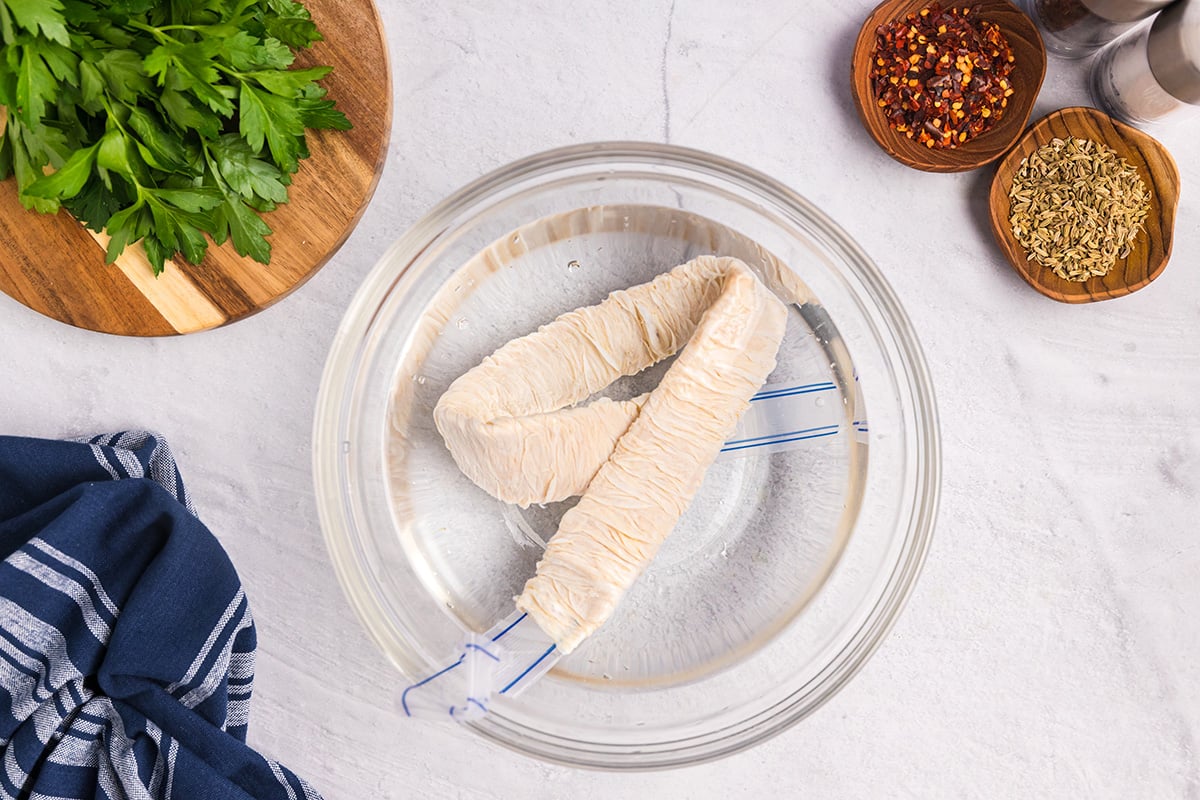
How to Make Italian Sausage
While some special equipment is needed, it’s actually quite fun to make your own sausage at home.
- Chill equipment. Start by putting a large metal or glass mixing bowl, meat grinder with coarse plate (or medium size dye) and sausage stuffer into the freezer to chill. I recommend at least 1 hour, but this can also done a day or so in advance too. Cold items will prevent the meat from sticking and be easier to work with.
- Toast fennel seeds and combine with other seasonings. In a small sauté pan, toast the fennel seeds over low heat until fragrant. Transfer them to a small mixing bowl and stir in the paprika, cayenne, salt, white pepper, onion powder, sugar and crushed red pepper flakes.
- Cut, season and chill pork. Cut the pork shoulder into 1-inch cubes and put it into the chilled metal or glass mixing bowl. Toss the pork cubes with the combined spices, garlic and parsley. Chill in the refrigerator.
- Assemble grinder. Remove the meat grinder and plate from the freezer. Assemble the grinder and use another large metal or glass mixing bowl to catch the ground meat.
- Feed pork through grinder. Working in batches, feed the pork cube and spice mixture through the meat grinder at a speed of 4.
- Mix meat with wine and chill. When finished grinding, mix the meat with the red wine and red wine vinegar using your hands, a meat mixer or the paddle attachment of a stand mixer. An electric hand mixer will not work for this purpose. Place the mixture back into the refrigerator.
- Stuff the casings. If you are casing, assemble the stuffer. Thread one length of sausage casing onto the stuffing. Tie the end into a small knot. Run the ground meat mixture through the stuffer at a low speed. Make links about 4-5 inches long, stopping to twist the casing after each link to separate them.
- Tie ends. Twist in opposing directions from link-to-link. Tie at knot at the end of the casing. It helps to have an additional person to hold the casing as it comes out and another operating the speed and feeding the stuffer. I like to stop the machine to twist off links.
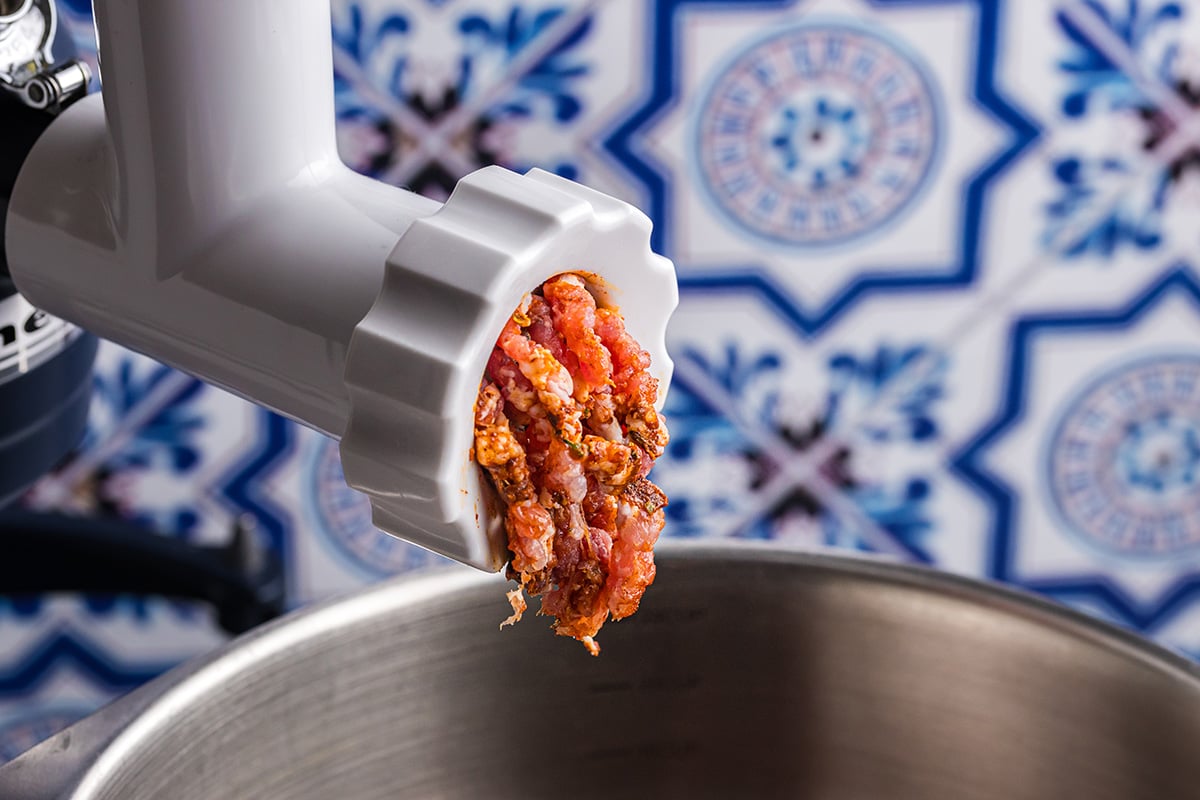
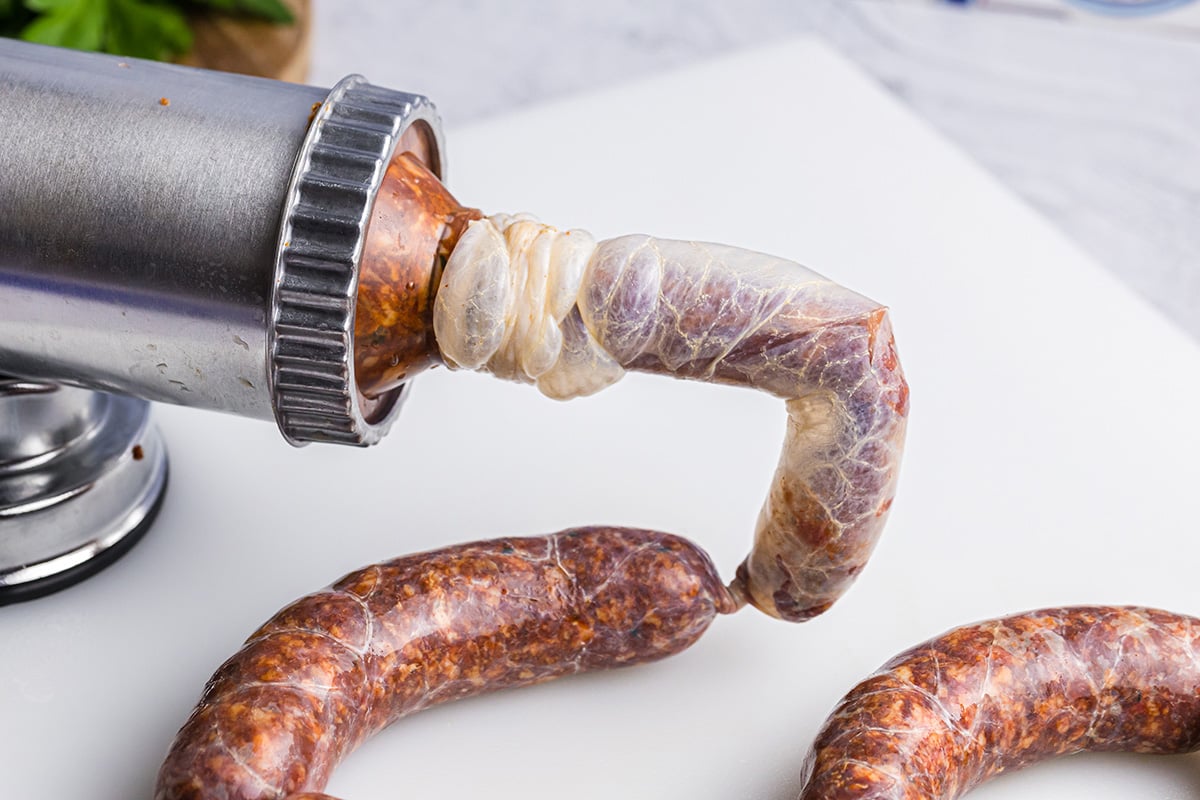
Equipment for Making Sausage
If you have a KitchenAid, both attachments will cost you about $100. You can also buy a hand powered meat grinder that is a lot cheaper and attaches to any countertop.
A sausage stuffer is nice, but you can always form the meat into patties or meatballs instead of using a casing. If you do choose to use a casing, I like natural hog products, kept good in salt and 100% natural.
You will also need a way to dry your sausage and apparently there is a specialty item for just this purpose, however I fashioned my own using a laundry drying rack wrapped with aluminum foil. Just call me MacGyver.
Tips for Making Sausage at Home
- Sausage making isn’t a tedious process, in fact it is kind of fun and can easily be a family affair. You will certainly need more than two hands at times.
- Plan for a few hours, but note that your sausage won’t be complete until the following day.
- Other important tips for perfect homemade Italian sausage are to keep everything, including all of your utensils and ingredients, very cold. This prevents ingredients from sticking to the grinder and stuffer.


Storage and Freezing
How to Store Italian Sausage
You can store uncooked sausages in the refrigerator for up to five days in an airtight container.
Can I Freeze Italian Sausage?
Uncooked sausage will freeze well for up to six months. Thaw in the refrigerator for one day before cooking or reheating.


Italian Sausage Recipes
Now that you’ve made your Italian sausage, what should you use it in? These are some of our favorite recipes that use Italian sausage.
Baked Mostaccioli
Instant Pot 15 Bean Soup
One Pan Sausage Alfredo

Homemade Italian Sausage Recipe
Ingredients
- Natural Hog Casings
- 5 tablespoons whole fennel seed
- 5 tablespoons smoked paprika
- 3 tablespoons cayenne
- 1 tablespoon coarse kosher salt
- 1 tablespoon ground white pepper
- 1 tablespoon onion powder
- 1 tablespoon sugar
- 3 teaspoons crushed red pepper
- 4-5 pounds boneless fatty pork shoulder
- 1/4 cup fresh Italian parsley , minced
- 8 garlic cloves ,finely minced
- 1/2 cup red wine
- 1/4 cup red wine vinegar
Instructions
- Start by putting a large metal or glass mixing bowl, meat grinder with coarse plate (or medium size dye) and sausage stuffer into the freezer to chill. I recommend at least 1 hour, but this can also done a day or so in advance too. Cold items will prevent the meat from sticking and be easier to work with.
- In a small saute pan, toast the fennel seeds over low heat until fragrant, approximately 3-4 minutes. Transfer them to a small mixing bowl and stir in the paprika, cayenne, salt, white pepper, onion powder, sugar and crushed red pepper flakes. Set aside.
- Cut the pork shoulder into 1-inch cubes and put it into the chilled metal or glass mixing bowl. Toss the pork cubes with the combined spices, garlic and parsley. Chill in the refrigerator for at least 30 minutes.
- While chilling, prepare the sausage casings (if you are using sausage casings). They look fragile and thin, but they are hearty and tough! Remove about 12-15 feet of sausage casings and place into a bowl of lukewarm water. Rinse well, drain water. Repeat until water is clear. Carefully run water through the inside of each casing. Cover casings with fresh water and set aside until ready to stuff.
- Remove the meat grinder and plate from the freezer. Assemble the grinder and use another large metal or glass mixing bowl to catch the ground meat.
- Working in batches, feed the pork cube and spice mixture through the meat grinder at a speed of 4.
- When finished grinding, mix the meat with the red wine and red wine vinegar using your hands, a meat mixer or the paddle attachment of a stand mixer. An electric hand mixer will not work for this purpose. Place the mixture back into the refrigerator for 20-30 minutes.
- If you are casing, assemble the stuffer. Thread one length of sausage casing onto the stuffing. Tie the end into a small knot. Run the ground meat mixture through the stuffer at a low speed. Make links about 4-5 inches long, stopping to twist the casing after each link to seperate them. Twist in opposing directions from link-to-link. Tie at knot at the end of the casing. It helps to have an additional person to hold the casing as it comes out and another operating the speed and feeding the stuffer. I like to stop the machine to twist off links.
- Optional: Traditional sausage making calls for curing the links. Be creative with how you chose to dry your meat. I would suggest doing this inside or in a garage instead of outdoors due to insects and other animals wanting to nibble on your hard work. As previously mentioned, I used my laundry drying rack and aluminum foil. Also place a towel underneath the drying rack to catch any drips. Allow to cure for 2-3 hours. If you see any air bubbles you can puncture them with a sterilized sewing needle, although they won't cause any problems if you leave them.
- Refrigerate for 24 hours before cooking or freezing. The meat will congeal and marry with herbs and spices.
- If you've tried this recipe, come back and let us know how you liked it in the comments or star ratings.
Notes
Nutrition










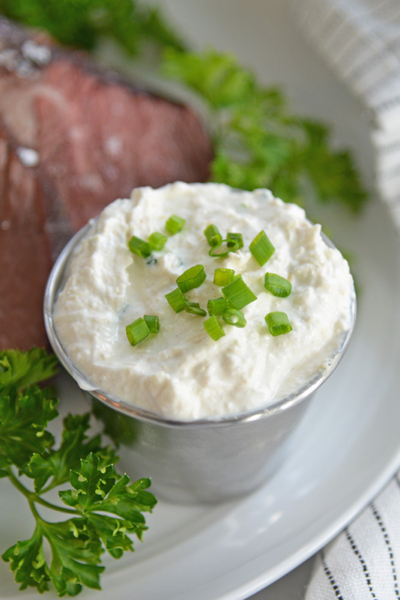

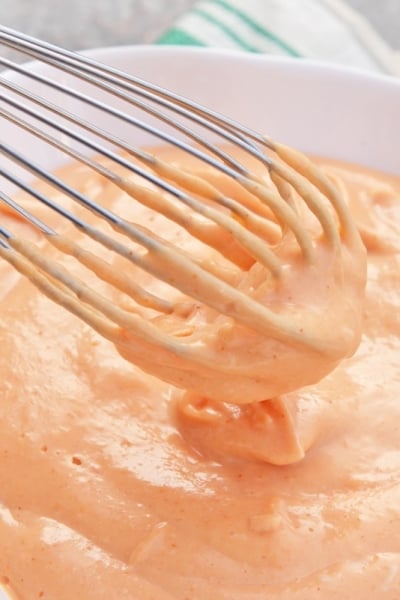
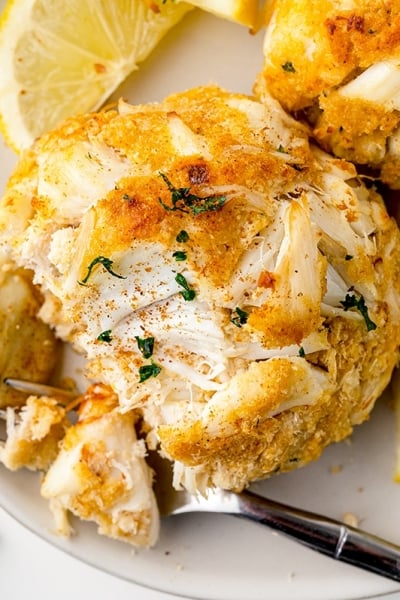

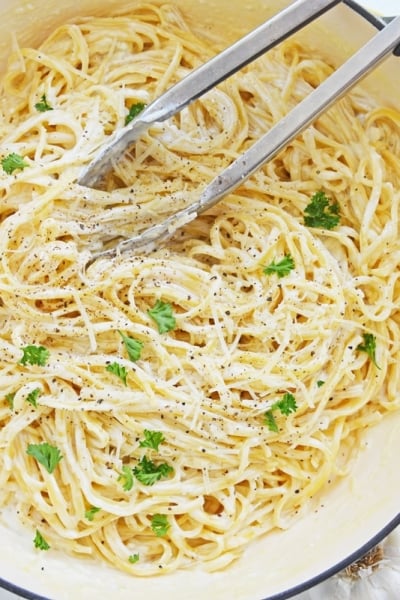
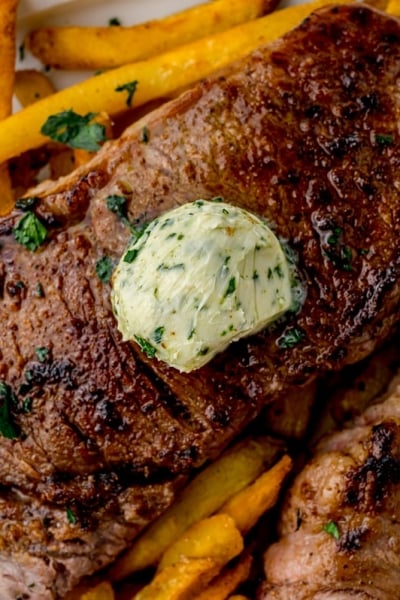







Jessica can you please explain the cure? I’m learning about making sausage and have learned the importance of using cure #1 or Prague powder to keep safe from botulism when the product is at or around room temp for long periods of time.
Hi! Great question- I just answered it in the notes section of the recipe card. We usually don’t leave them out (other than to cure) and use them fairly quick or freeze, so using this isn’t necessary. However, feel free to add it- we just gave the amounts/instructions.
I’ve made this twice and love the spice mixture. I am concerned about the hanging drying time. As I’ve gotten more into sasuage making it appears anything over 2 hours puts sasuage in the danger zone. Just a heads up to others following this recipe
Just answered this question in the notes section, but the CDC recommends no longer than 2 hours. With that said, many professional cooks will allow roasts and meat to “come to room temperature” for a lot longer. This meat mixture is blended so cold that 3 hours isn’t enough to bring it to the scary point. If you wish to err on the side of caution, just cure it for 2 hours and pop it in the fridge.
Working on this now. I will let you know how well it comes out. Thanks for shariing
Can’t wait to make this sausage! I just have one (probably silly) question. Would you please recommend a type of red wine, that you would use? I realize I could use a red wine I would like to drink, but as far as flavor, would a merlot be better than some other type of red wine?
No silly questions! I would go for something more like a table wine without really bold flavors- either sweet or oaky. I find a dry wine is best. As a whole, Cabernet Sauvignon is probably a good bet.
So much better than store bought sausage! Homemade is the way to go. Thanks for sharing!
My husband loves making homemade sausage so we’re always on the lookout for new recipes. This one was a hit! We’ll be making it again I’m sure.